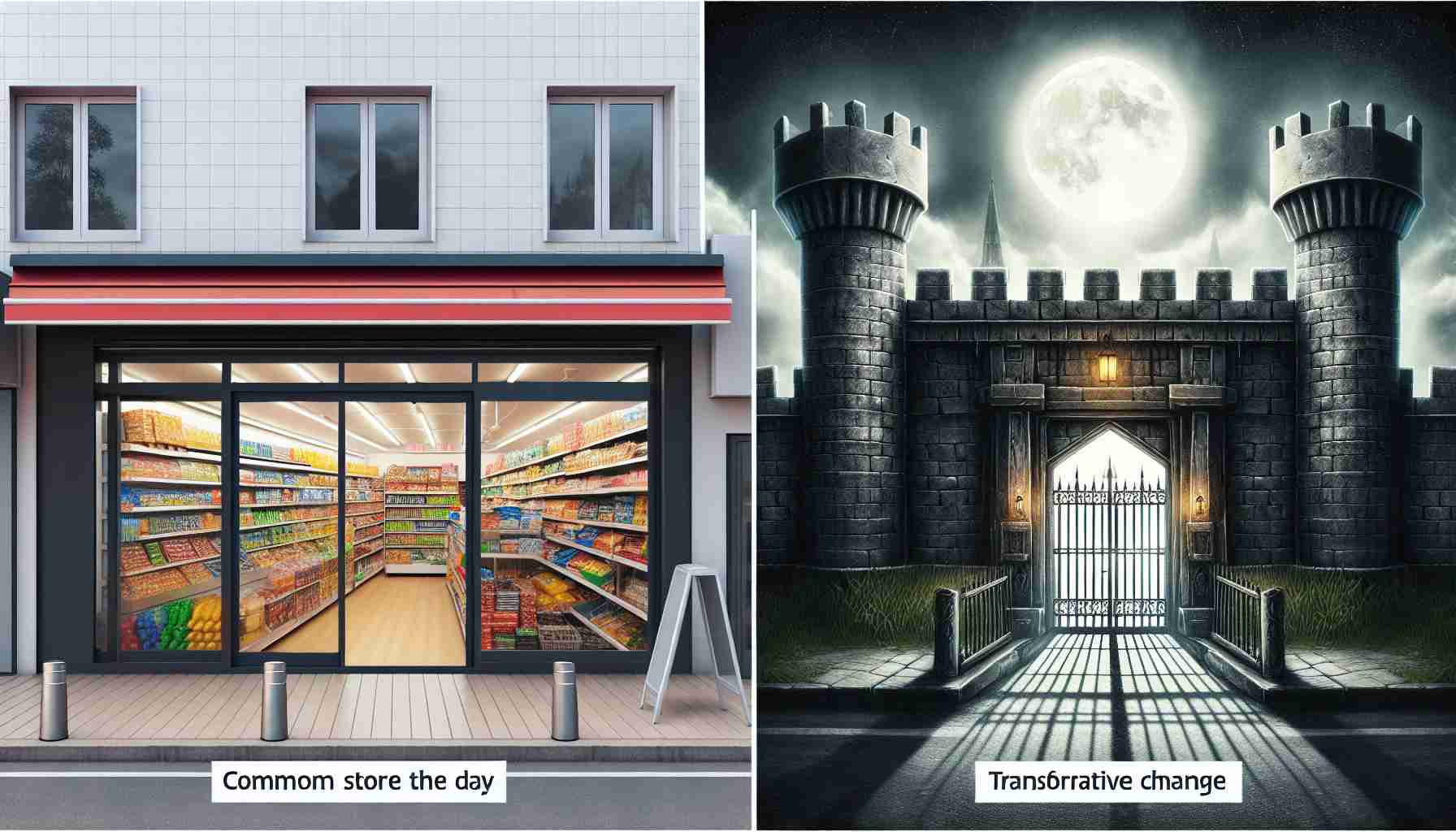- Iconic store chains are enhancing security at select branches, transforming them into heavily fortified spaces.
- Imposing panels and barriers deter potential intruders, prioritizing safety over aesthetics.
- Automated doors are used to restrict access at night, controlled by staff through remote systems.
- These security measures address workforce shortages by compensating for fewer staff on duty.
- The changes represent a balance between maintaining the store’s traditional allure and adapting to modern challenges.
- This transformation highlights the importance of preparedness in a world of uncertainty, blending tradition with innovation.
Beneath the neon glow of bustling cities, a quiet transformation is unfolding. Known for convenience and accessibility, an iconic store chain is fortifying select branches with heightened security measures, turning them into something reminiscent of a fortress. Imagine stepping into a store and finding counters guarded by imposing panels, designed not for aesthetics, but to impede any would-be intruder’s path. These barriers stand tall to deter those with sinister intentions from breaching the sanctum behind the counter.
But the changes don’t stop there. As midnight approaches, automated doors—once welcoming beacons for insomniacs and night owls—seal shut. Access becomes a controlled privilege, granted only by vigilant employees using remote controls, an almost surreal dance of technology and security.
One might wonder what drives this shift. The answer, it appears, lies beneath the surface, partially masked by the store’s seamless veneer. A workforce stretched thin by shortages has nudged management to rethink security. Fewer staff to monitor the aisles means a greater reliance on protective barriers and automated systems. It’s a balancing act between maintaining the beloved essence of what the store represents and meeting the challenges of a changing world.
As these fortifications rise, they whisper a story of adaptation. Businesses are learning to blend tradition with innovation, ensuring safety while striving to serve at all hours. The message is clear: in an era marked by unpredictability, preparedness remains paramount. So the next time you step into a late-night convenience store, look closely—you might just see a modern fortress in plain sight.
Are Convenience Stores Becoming High-Tech Fortresses?
How-To Steps & Life Hacks: Enhancing Personal Safety During Late Night Shopping
1. Plan Your Visit: Aim to shop during early evening hours when foot traffic is higher.
2. Stay Aware: Be mindful of your surroundings and the security measures in place.
3. Use Payment Apps: Consider contactless payment methods to minimize time at counters.
4. Buddy System: When possible, bring a friend to enhance safety in less busy hours.
5. Know the Exits: Familiarize yourself with store exits in case of an emergency.
Real-World Use Cases: Security Measures in Action
Many urban convenience stores are increasingly using these security upgrades to:
– Deter Theft: Physical barriers and controlled access reduce shoplifting incidents.
– Protect Staff: Staff work more safely with enhanced defensive setups.
– Limit Late-Night Risks: Automated door systems help regulate customer entry, especially during high-risk hours.
Market Forecasts & Industry Trends
Trend Shift: The global retail industry is seeing a growing trend towards enhanced store security, driven by both technology and operational needs. According to a report by Markets and Markets, the security solutions market is expected to reach $282.6 billion by 2023, demonstrating the growing investment in this sector.
Reviews & Comparisons
Balancing Act: Retailers like 7-Eleven and Circle K are implementing similar measures, though the effectiveness varies based on location and the specific security products used.
Controversies & Limitations
Customer Sentiment: While some appreciate the additional security, others feel alienated by the barriers. There’s a fine line between making customers feel safe and making the environment feel unwelcoming.
Features, Specs & Pricing
Common security upgrades include:
– Plexiglass Barriers: Cost-effective, durable, and resistant to damage.
– Automated Doors: Enhance safety, typically costing around $2,000-$5,000 per installation.
Security & Sustainability
Integration of Green Technology: Modern security installations often include energy-efficient lighting and automated systems to reduce carbon footprint, aligning with sustainability goals.
Insights & Predictions
Safety measures in convenience stores will continue to evolve with technology. AI and IoT (Internet of Things) may play larger roles in real-time security solutions.
Tutorials & Compatibility
For stores considering upgrades, selecting interoperable systems is crucial:
– Compatibility: Choose systems like smart cameras and automated doors that can be integrated with existing infrastructure.
Pros & Cons Overview
Pros:
– Enhanced security protects both staff and customers.
– Automated systems can reduce operational costs in the long run.
Cons:
– Installations can be expensive upfront.
– Potential negative impact on customer experience.
Actionable Recommendations
– Customers: Use these fortified stores during quieter hours to enjoy enhanced safety.
– Businesses: Continually assess and update security measures to adapt to emerging threats.
For more information on how stores are innovating to meet market demands, visit RetailDive.
